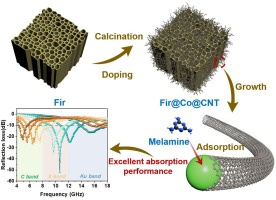
New Plasma Breakthrough Improves Carbon Nanotube Purification from CO₂
A chance finding by researchers at George Washington University has revealed an innovative approach for purifying carbon nanotubes (CNTs) sourced from waste carbon dioxide (CO₂) — simply by heating them in a microwave. Under the guidance of Professor Stuart Licht, the team discovered that placing these carbon nanomaterials in a regular microwave oven initiates the creation of a dazzling yellow-white plasma that effectively purifies the CNTs under unexpectedly mild conditions.
This finding holds significant promise for eco-friendly nanomaterial manufacturing and carbon capture technologies.
Plasma: The Ionized Fourth State of Matter
Plasma, often described as the fourth state of matter (in addition to solid, liquid, and gas), is a gas heated to such an extent that electrons are detached from atomic nuclei. This ionized gas reacts intensely to electric and magnetic fields and occurs naturally in phenomena like lightning and stars; it is utilized in various applications, including neon lighting, semiconductor fabrication, and medical sterilization.
Generating and sustaining plasma generally requires specialized high-temperature equipment or vacuum environments. However, Licht’s group discovered that plasma can be produced using a typical microwave oven — given the right material conditions.
Carbon Nanotubes from CO₂: A More Sustainable Option
Until recently, the prevailing technique for synthesizing carbon nanotubes involved chemical vapor deposition (CVD) — a process that is energy-intensive, relies on fossil fuels, and releases substantial amounts of carbon dioxide.
In 2009, Professor Licht introduced an alternative process — molten carbonate electrolysis — which transforms CO₂ directly into graphite, graphene, and other types of nanocarbon, while emitting oxygen gas as a byproduct. This method not only captures CO₂ but also converts it into commercially valuable materials, representing a promising path toward negative-emission manufacturing.
Striking Plasma Purifies Nanotubes
Expanding on his previous research, Licht’s team has optimized the procedure to generate carbon nanotubes directly from carbon dioxide through molten carbonate electrolysis. When they exposed these nanotubes to microwave radiation, they witnessed a remarkable phenomenon: a bright, glowing yellow-white plasma developed within seconds, reaching temperatures above 800°C.
Crucially, this plasma had a strong purifying effect. It oxidized and removed impurities commonly found in CNT production — such as residual metals, amorphous carbon, and electrolyte remnants — which are typically eliminated using complicated, energy-demanding chemical methods that involve potent acids and high temperatures.
Not All Nanotubes Produce Plasma
Interestingly, the researchers noted that plasma formation only took place with CNTs produced through the electrolysis method. No such reaction was noted when they microwaved commercial nanotubes produced via CVD.
The team suggested that the variation stems from the makeup of the electrochemically synthesized nanotubes. During molten carbonate electrolysis, trace amounts of transition metals are incorporated into the nanotubes. These metals enhance both the magnetic and electric attributes of the CNTs, making them more responsive to microwave radiation. Consequently, they heat swiftly, facilitating electron release and triggering plasma generation.
A New Approach for Nanomaterial Processing
This microwave-induced plasma offers a fresh and energy-efficient technique for carbon nanotube purification. The process yields clean, high-quality nanotubes without needing corrosive chemicals, high-temperature furnaces, or vacuum chambers. Additionally, it utilizes a waste product — CO₂ — converting it into a value-added nanomaterial useful in electronics, energy storage, materials science, and beyond.
The implications are significant: this method could not only render carbon nanomaterial production more sustainable but also aid in mitigating industrial CO₂ emissions.
As Licht and his team delve deeper into the mechanisms behind this novel plasma generation and develop scalable purification methods, this unexpected combination of microwave ovens and carbon chemistry could unlock new possibilities in green nanotechnology.
Sources:
1. Licht, S. et al., George Washington University Research Announcement, 2024.
2. Licht, S. et al., Initial Demonstration of Molten Carbonate Electrolysis for CO₂ Conversion to Nanocarbons, 2009.